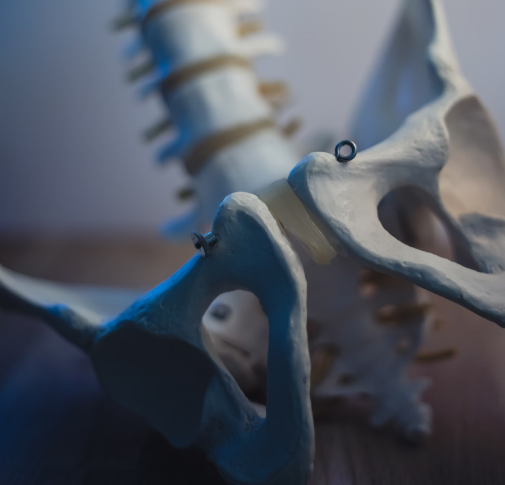Restoring pelvic floor strength and function is an endeavor that holds transformative potential for one’s health and quality of life. This journey, often embarked upon in the aftermath of childbirth, surgery, or as part of the aging process, is about physical rehabilitation, but also about regaining confidence and comfort in one’s own body. It’s a path that underscores the resilience of the human body and the remarkable capacity for recovery with the right knowledge and tools. Through understanding, diagnosis, targeted exercises, lifestyle modifications, and ongoing care, individuals can achieve significant improvements in pelvic floor health.
Understanding the Pelvic Floor Anatomy and Importance
The pelvic floor is a complex network of muscles, ligaments, and tissues that support the bladder, uterus (in women), and rectum. Like a hammock, this muscular layer extends across the base of the pelvis, playing a pivotal role in urinary and fecal continence, sexual function, and supporting the organs against gravity. The health of the pelvic floor is fundamental, yet it’s an aspect of well-being that is often overlooked until symptoms of dysfunction arise, manifesting as incontinence, pain, or pelvic organ prolapse.
Acknowledging the importance of the pelvic floor is the first step toward empowerment. Its role extends beyond mere support; it is integral to core stability, posture, and the prevention of injuries. Dysfunction in this area can have profound impacts on daily life, affecting physical activity, sexual health, and psychological well-being. By understanding its anatomy and significance, individuals are better positioned to appreciate the nuances of their recovery journey and the critical nature of the rehabilitation process.
The Path to Diagnosis
The journey to restoring pelvic floor strength begins with a proper diagnosis, which is crucial for tailoring the right treatment plan. Symptoms of pelvic floor dysfunction can vary widely, from incontinence and discomfort to more subtle signs like chronic lower back pain. These symptoms can be mistaken for other conditions, making an accurate assessment by a healthcare professional essential. A multidisciplinary approach, often involving physiotherapists specialized in pelvic health, urologists, and gynecologists, ensures a comprehensive evaluation.
Diagnosis may involve a combination of physical examinations, symptom discussions, and possibly imaging tests to ascertain the extent of dysfunction. This initial step is about identifying the issue and understanding the individual’s lifestyle, goals, and concerns. A personalized diagnosis paves the way for a customized rehabilitation plan, marking the beginning of a targeted approach to recovery. It sets the stage for engaging in the most effective treatments and exercises, ensuring that every effort contributes towards meaningful improvement.
Strengthening Exercises for the Pelvic Floor
Pelvic floor exercises, commonly known as Kegels, are the cornerstone of strengthening efforts. These exercises focus on contracting and relaxing the pelvic floor muscles to improve their tone and endurance. However, Kegels are not a one-size-fits-all solution; their effectiveness hinges on proper technique and consistency. For some, incorporating exercises that also engage the core and lower back muscles can provide a more holistic approach, enhancing pelvic floor function as part of the body’s integrated system.
Beyond Kegels, incorporating exercises like squats, bridges, and pelvic tilts can further support recovery. Each of these movements contributes to the rehabilitation process by reinforcing the muscles’ ability to support the pelvic organs effectively. Importantly, progression should be gradual, with an emphasis on mastering form before increasing intensity. This mindful approach prevents overexertion and ensures that each exercise maximizes the healing process, steering individuals towards recovery with every repetition.
Lifestyle Adjustments for Optimal Pelvic Health
Adopting lifestyle changes is pivotal in supporting pelvic floor health. Dietary modifications can play a significant role; staying hydrated and ensuring a diet rich in fiber can alleviate strain during bowel movements, reducing pressure on the pelvic floor. Likewise, maintaining a healthy weight minimizes excess abdominal pressure, offering relief and preventing further weakening of pelvic floor muscles.
Mindful engagement in physical activities is equally important. High-impact sports and heavy lifting might exacerbate symptoms, suggesting a need for moderation and adjustment. Opting for low-impact exercises and practicing proper lifting techniques can mitigate risks and foster a conducive environment for healing. These lifestyle adjustments, while seemingly simple, are instrumental in reinforcing the benefits gained from targeted exercises and treatments, ensuring that everyday actions contribute to long-term pelvic floor health.
Sustaining Pelvic Floor Health Post-Recovery
The journey toward restoring pelvic floor strength extends beyond the initial recovery phase. Sustaining the health of the pelvic floor is an ongoing commitment that involves continued practice of exercises, being mindful of lifestyle choices, and staying vigilant about symptoms. Regular check-ins with a healthcare provider can help catch and address any emerging issues early, maintaining the progress achieved.
Incorporating pelvic floor exercises into a routine wellness regimen is a proactive measure that can prevent recurrence of symptoms. Just as one might continue to exercise to maintain cardiovascular health or flexibility, the same principle applies to the pelvic floor. Embracing a holistic view of health where pelvic wellness is regarded as integral to overall well-being ensures that the benefits of recovery are preserved for years to come.
Restoring pelvic floor strength and function is a multifaceted process that combines knowledge, personalized care, and lifestyle integration. It is a testament to the resilience of the human body and the power of dedicated, informed effort. By understanding the anatomy and importance of the pelvic floor, pursuing a tailored diagnosis, engaging in targeted exercises, making strategic lifestyle adjustments, and committing to ongoing maintenance, individuals can achieve profound improvements in their health and quality of life. This journey, though personal and unique to each individual, highlights a universal truth: with the right approach, recovery and renewal are within reach.




